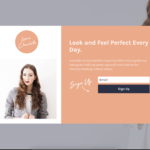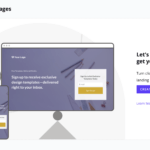When seeing people looking to start their SaaS startups, there are a few common pitfalls these new entrepreneurs fall into that can severely impact their ability to execute. Whether you are a technical founder coming from an engineering or coding background looking to solo build your first project or a non-technical founder looking at ways to make their idea come to live, below are 5 top things that can cause you to fail.
Build for months without talking to customers
When building your product, you must find your market fit. A lot of entrepreneurs go on the path of building without talking to their potential customers and find themselves thinking about features that aren’t even needed or building an application flow for a user that makes no sense.
To avoid this, start early talking to your potential customer base. Find out what they are using today if they have a solution in place. Many times they may be using a solution but may not be fully happy with it as it may not solve the full problem that exists. On the other than, you may save months of building something there is no problem in the first place.
Build and assume customers will come
I consider this what I dubbed the “retail fallacy” (no, it won’t exist in a business textbook anywhere). This is the concept that many people fall into that just because they are selling something, people will buy it. Even outside of SaaS products, there are plenty of Amazon drop shipper startups, Etsy creatives, and Shopify stores selling items no one wants.
From failing to discover your brand, being too similar to another product, difficultly to switch to you, or even because you failed to see the customer need before you started building. Just because you are selling something, people aren’t inherently going to just buy it.
To avoid this, make sure your value is clear. Your product should easily display to visitors and shoppers what value it brings and why they need it.
Build for scale before making $1
This one is one of my favorites: over-engineering to oblivion. You have done the research and you found a few businesses who would be your first customers, you now just need to get them a working product. Engineering minded founders spend too much time in this phase thinking about their application if it were to scale to 1,000’s of daily active users. In many cases, founders spend months engineering a process or a small part of the application that in many cases isn’t even required when the users start using the application burning up valuable time and money. Over engineering applications can even prevent you from ever launching by creating problems that need to be solved that never exist or create
How to avoid this? Remember that many massive businesses today were initially built to not scale. Door Dash is constantly referred to with the founders as Stanford students building a website with a phone number they took orders from students on campus, placed them with the local food business, and manually delivered them in their free time. They were able to get this idea moving and within months of founding, they got their first wave of funding.
Build fancy tech instead of getting the job done
Similar to building for scale, a lot of founders get hung up on what tech stack is the latest and greatest they need to use and not focus on what they know. A founder who has a skill set in PHP or NodeJs starts to see all the latest “sexy” application framework that massive tech giants like Google and Facebook are building. They then take on the task of learning a brand new framework to make their app cutting edge on top of building their product.
How to avoid this? Stop scope creeping your MVP. You have an idea, you have customers. Build it to make them happy and stop worrying about what someone in /r/saas thinks on Reddit about your tech stack. Even front end frameworks like React which at one point was the holy grail of building applications are starting to be replaced by the traditional HTML/CSS/JS front end requirements.
Build a “great” product that solves no problem
The last big challenge I see is similar the first item of not talking to customers that involves a founder building a great product. The UI is intuitive, the application is easy to use, the landing website gets the information across. The problem? The application doesn’t solve anything of value that people would pay for.
How to avoid this? When talking to potential customers, it is important to find out not only the problems they have that need solving, but also what ones are important enough to pay for. You can engineer an incredible product that is fun to use but unfortunately, if the problem doesn’t exist, no one is going to sign up or continue to engage with your product. Your product must be clear when solving a problem.











